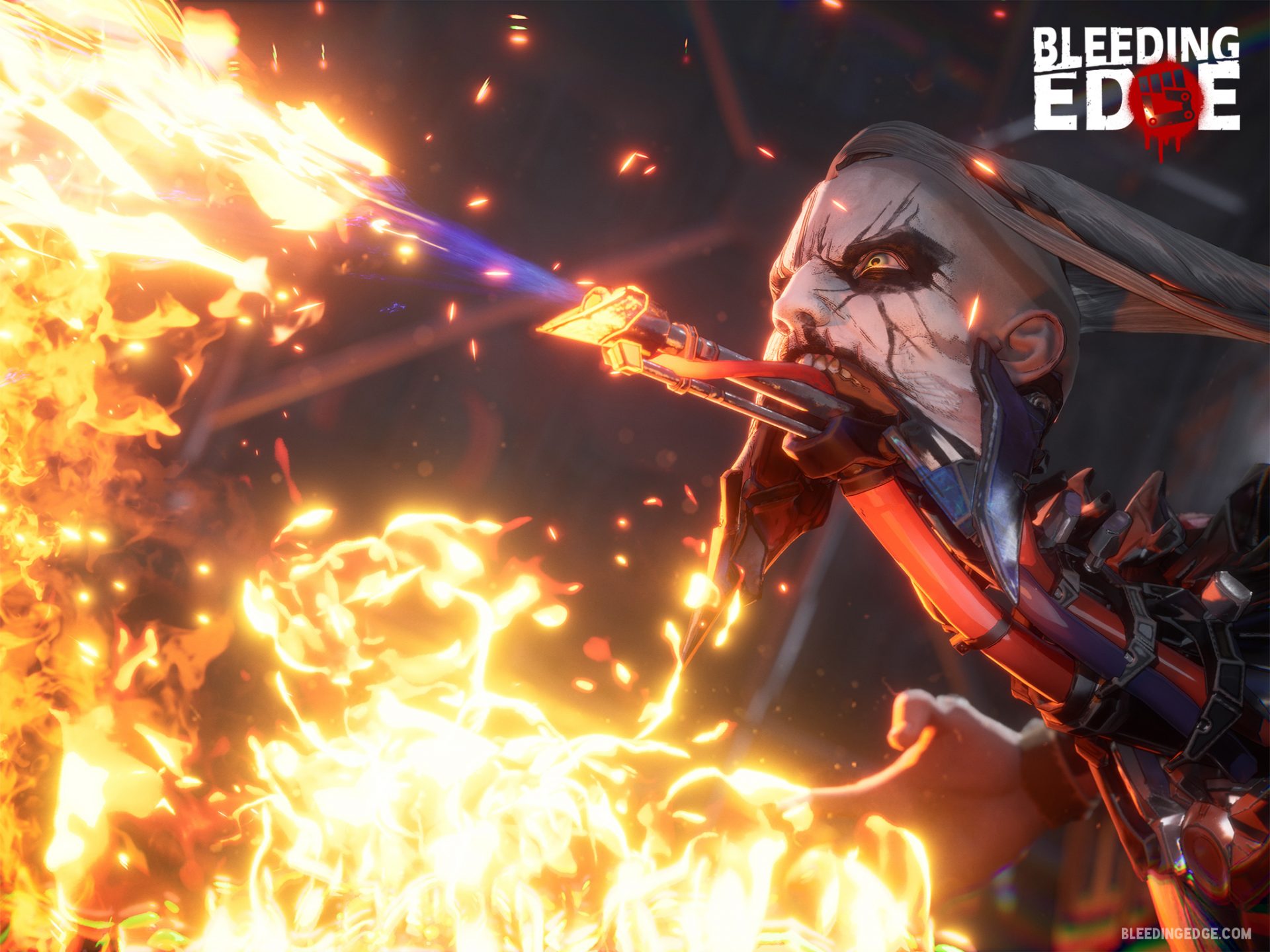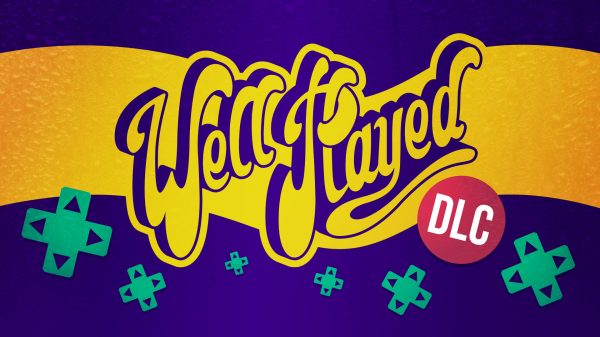Wedging a release between the likes of Doom Eternal, Animal Crossing: New Horizons and Final Fantasy VII Remake is lunacy in itself, but releasing an online-only multiplayer brawler in that time frame? That’s lunacy squared. But here we are, celebrating Ninja Theory’s first foray under the banner of Microsoft with its oddball project Bleeding Edge. It’s got a laundry list of issues in more or less every aspect of its design, but be damned if I don’t love it a little bit.
Bleeding Edge’s story is as non-existent as the queen’s magic cow that poops rainbows. A very brief opening cinematic seems to suggest that someone stole some augmenting technology (I think it was that graffiti samurai) and now people are getting kitted out Adam Jensen style (they asked for this) and fighting each other in arenas. That’s it. Characters have bios that you can read but none of it really fits or gives the characters a sense that they exist for any reason. Several of their ‘augments’ look extremely invasive and painful, and why someone would voluntarily make themselves look like a corpse with a snake for an arm is beyond me. But we’re not here for the story or to explain why someone would give themselves buzz saws for hands, we’re here to fight.
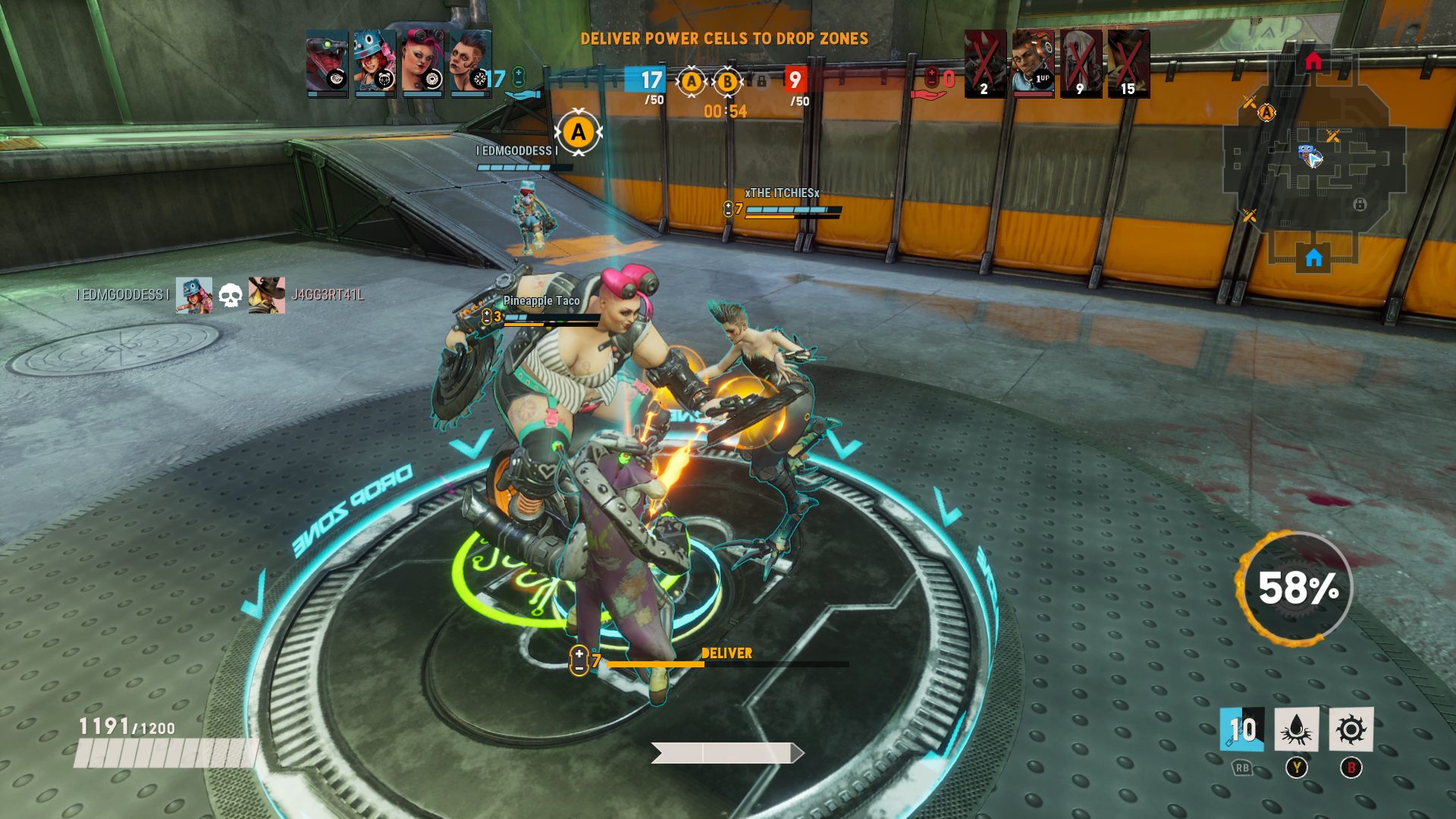
Delivering the goods
Bleeding Edge’s eleven-strong roster is a comfortably familiar class-based affair, split between damage dealers, support and tanks. There’s a leaning towards mainly melee-based warfare, but there are a few ranged options too. In terms of visual design, the characters are both confidently and extremely bizarre, and instantly recognisable. This is handy when you’re in the thick of battle, and you’re trying to prioritise whether to go for the lady with the robot chicken legs or the fire-breathing Norweigian death metal guitarist. The pace of movement and the action in general feels pretty slow, and even whipping out your hoverboard for faster locomotion still feels like your gliding through molasses. It takes a while to get used to it, but the slower speed actually works out fairly well in the end, and effectively using some character’s speed-based skills and rationing your evade (which is based on a limited pool of stamina) is paramount.
It’s unlikely that there is enough depth or variety to hold hardcore gamers’ attentions for too long, or that some sort of meta will eventually emerge, because Bleeding Edge is above all a simple opportunity to take control of a weirdo and throw down which a bunch of other weirdos
Each character has a fairly basic moveset, with a normal attack, a few abilities on cooldowns and a more powerful ultimate. Bleeding Edge is definitely not shaking up the formula of the class-based brawler, and errs on the side of simplicity and accessibility. This I believe is one of its greater strengths, as it’s not trying to be overly complex, catering more to a casual fanbase. It’s unlikely that there is enough depth or variety to hold hardcore gamers’ attentions for too long, or that some sort of meta will eventually emerge, because Bleeding Edge is above all a simple opportunity to take control of a weirdo and throw down which a bunch of other weirdos. From what I’ve witnessed so far it’s decidedly less toxic than most online-only adversarial games too, and if you’re a rubbish healer then there’s a good chance no one will notice. Other than jumping on the mic and yelling at people, there are some rudimentary call outs accessible via the d-pad, but they do require you to temporarily stop moving, which is not really a great option in the heat of battle.
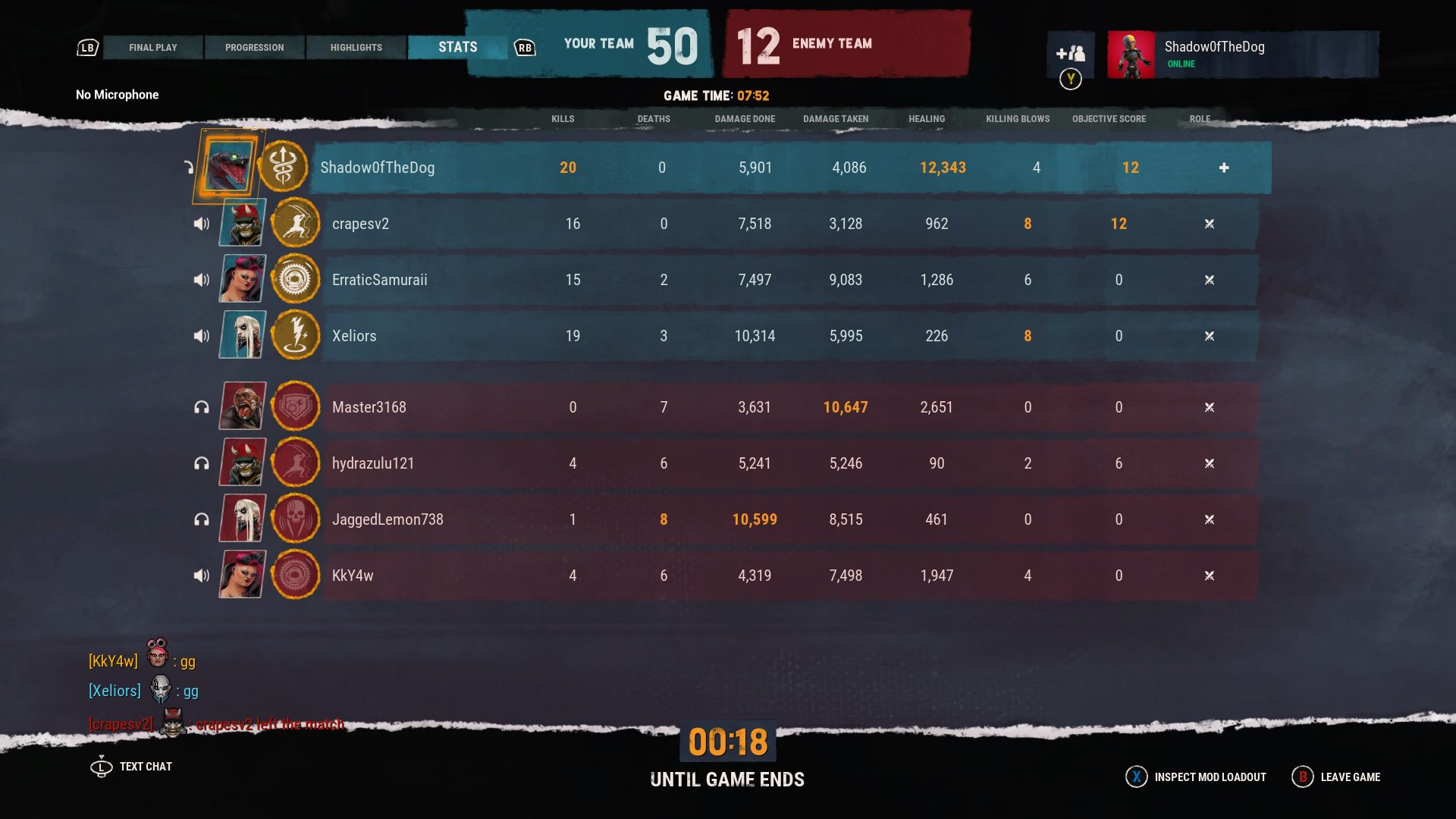
Curses and boons, baby
Bleeding Edge has two very basic modes, involving either controlling points on the map which pop up temporarily, or nabbing power cores and then taking them to points on the map that open up in order to score. Both modes are very serviceable and the fact you queue for both at the same time without getting to choose is probably a good idea in order to not split the player base. Some additional modes would certainly not go astray though, and the game is screaming out for some better lobby support. As it stands, after every match you are kicked back to the main menu and then have to requeue.
Your enjoyment of the game will probably be proportional to how good at it you are, and once you break through the initial sense of sterility and lack of dynamism in the maps and modes and find a couple of characters you like, Bleeding Edge becomes a lot of fun. Teamwork is key, and marauding around the map in search of victims with a ragtag group of strangers is a blast. You’ll of course get put on teams where people aren’t keen to group up and work together (read: don’t mind losing the match by a landslide), but for the most part people seem to understand that weirdos together strong. I spent some time with all the characters before settling on my two favourites, and learned that one shouldn’t judge a book by its cover. The fact that my main became a morbidly obese hillbilly crossed with a motorcycle named Buttercup was initially confusing, but over the hours we’ve spent together we’ve become inseparable. Kulev is also a great ranged offensive support character who uses buffs and curses, and I find myself splitting my time fairly evenly between the two depending on what my team needs.
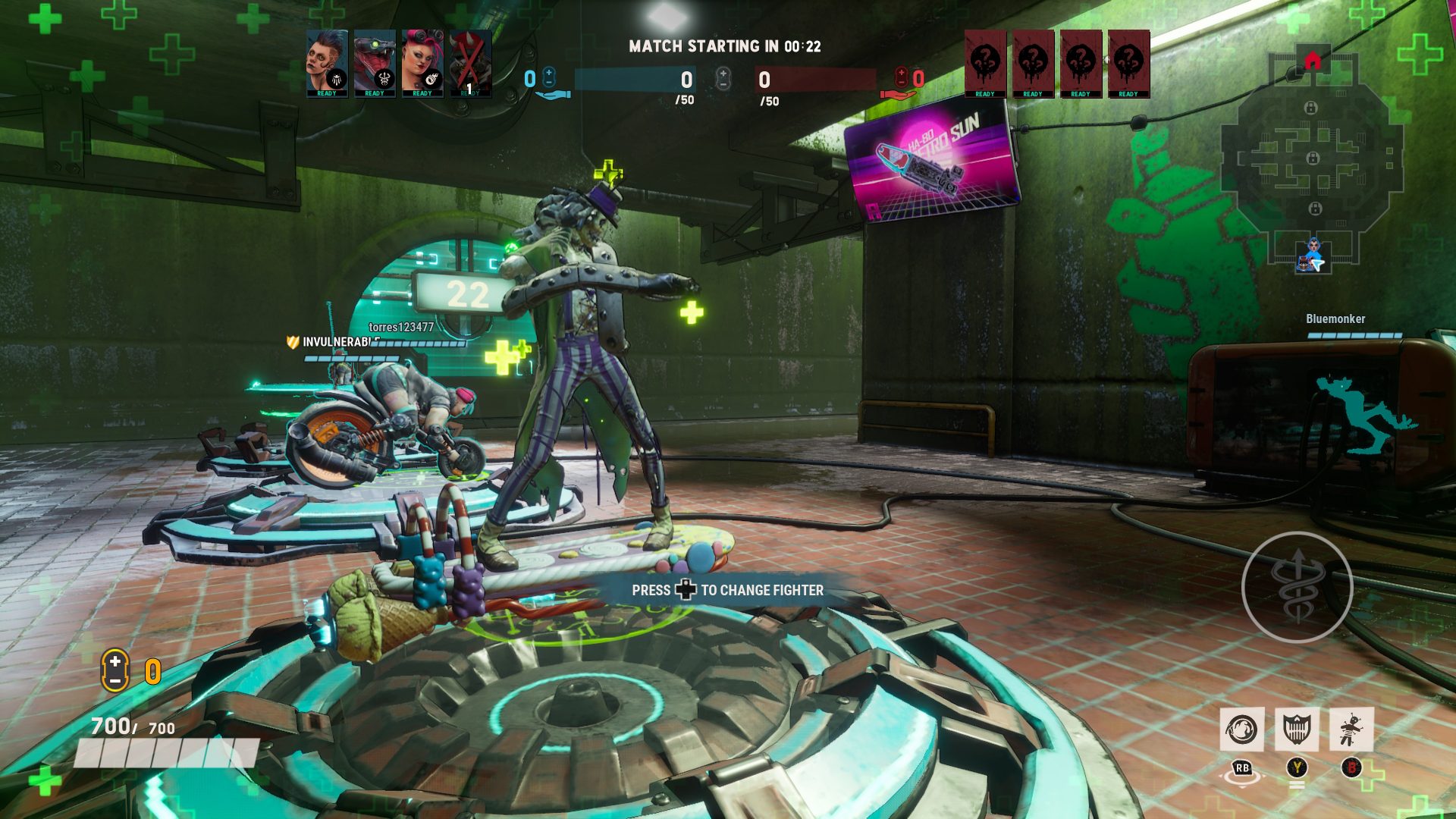
Why would someone voluntarily get these ‘augments’?
Given the simplicity of the game, you’ve got to make that carrot on a stick as tasty as possible, but at the moment it’s one of those floppy black ones you find at the bottom of the vegetable crisper
With such a strong focus on the visual design of the characters, the progression and cosmetic options are simply not up to scratch. As you play you earn currency which can be used to purchase new outfits, hoverboards and emotes, but these are all as expensive as they are limited. Skins are glorified colour retouches, and with only three per fighter there’s nothing to really strive for. Emotes are similarly malnumerous, but hoverboards do get slightly more love in terms of variation. Games like Overwatch have brilliant cosmetic options (even if some of it is through god-awful loot boxes), and everyone knows that all gamers are obsessed with playing Barbie with their fighty people. The lack of variety in the cosmetic department is criminal, and needs immediate rectifying. Given the simplicity of the game, you’ve got to make that carrot on a stick as tasty as possible, but at the moment it’s one of those floppy black ones you find at the bottom of the vegetable crisper.
It bears noting that, as of writing, Bleeding Edge has some fairly persistent issues with online connectivity, and games frequently suffer from moments of lag and slowdown. Hopefully these issues can be fixed, but expect to see people teleporting and rubberbanding at lease once per match in the game’s current state.
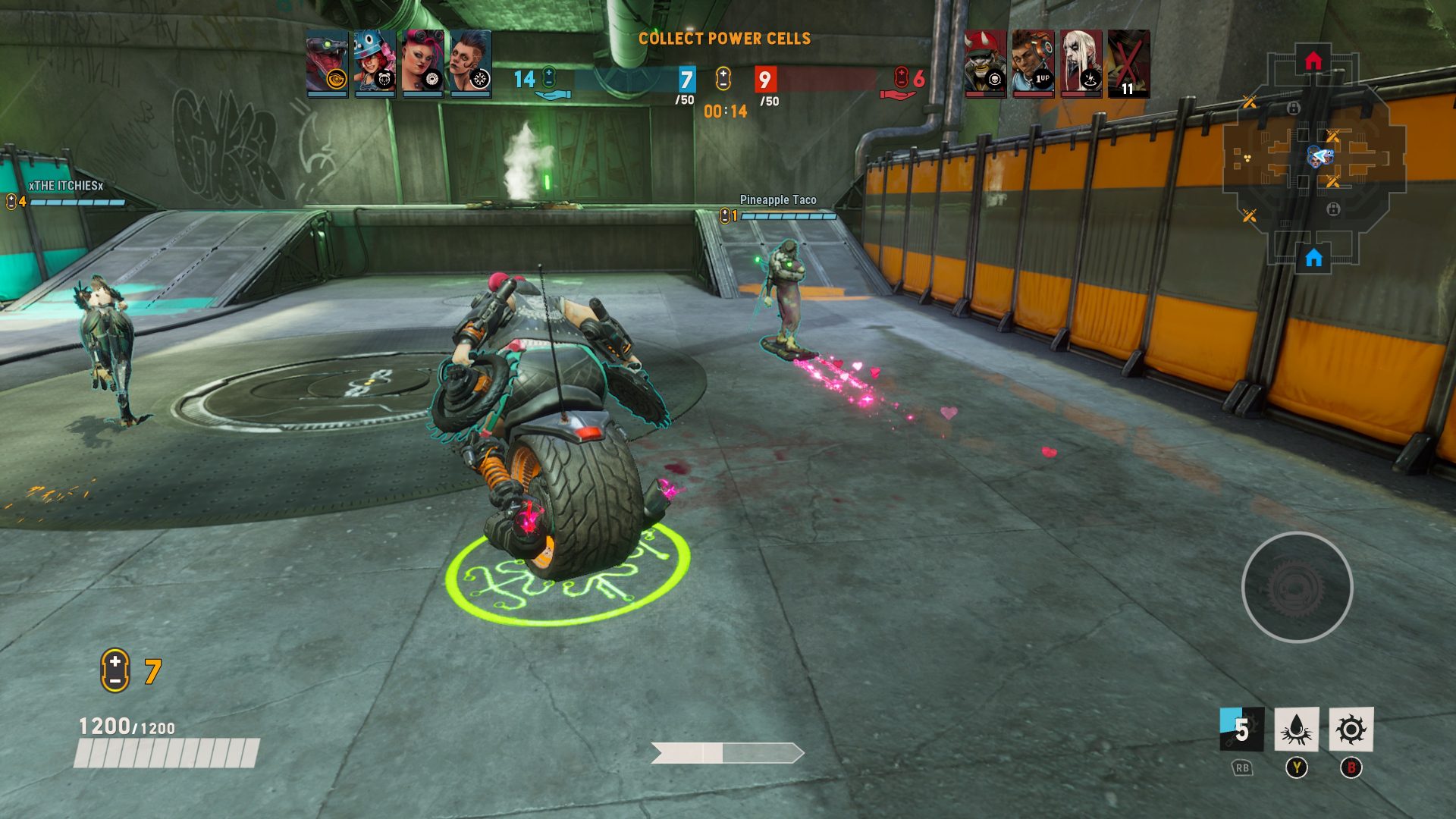
My girl Buttercup
Final Thoughts
It’s incredibly easy to criticise Bleeding Edge. It’s a bit clunky and slow, not as dynamic or sprightly as games like Overwatch (or even Battleborn), has terrible cosmetic options and shoddy net code. So it’s mildly confusing as to why I like it so much, but I do. For it to survive it’s got some work to do, but it may just fill a niche in smaller-scale competitive brawlers that have a bit more of a casual flavour. It may lack a certain depth, but it’s fun and accessible in a lot of ways. If you’re tired of kids screaming at you about their sexual escapades with your mother or getting doxxed for playing poorly in Overwatch, maybe come and relax with me and play some Bleeding Edge.
Reviewed on Xbox One // Review code supplied by publisher
Click here for more information on WellPlayed’s review policy and ethics

- Ninja Theory
- Xbox Game Studios
- Xbox One / PC
- March 24, 2020



Kieran is a consummate troll and outspoken detractor of the Uncharted series. He once fought a bear in the Alaskan wilderness while on a spirit quest and has a PhD in organic synthetic chemistry XBL: Shadow0fTheDog PSN: H8_Kill_Destroy





